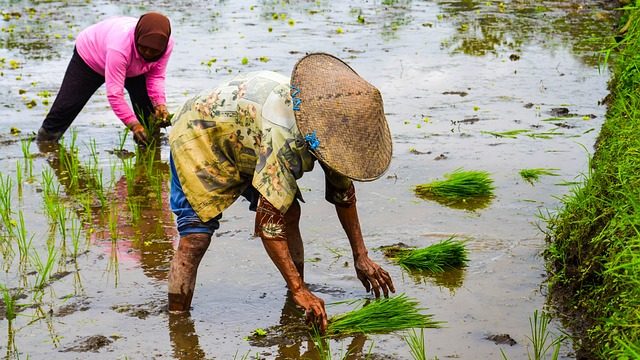日本の伝統的な季節の和菓子「柏餅」は、こどもの日(端午の節句)に欠かせない特別な食べ物です。
海外からの観光客や外国人の友人に日本文化を紹介する際、このユニークな和菓子について英語で説明できると、より深い文化交流が可能になります。
この記事では、「柏餅」の歴史、意味、作り方、食べ方をアメリカ人の友人に英語で紹介する際に役立つ表現や知識をご紹介します。
日本の伝統的な食文化を海外に発信する際の参考にしてください。
目次
「柏餅」の英語での基本的な説明
「柏餅」を英語で表現する場合、一般的には「Kashiwa-mochi」(カシワモチ)とローマ字表記することが多いですが、初めて聞く人にはその内容も説明する必要があります。
基本的な英語表現:
- “Kashiwa-mochi is a traditional Japanese sweet rice cake wrapped in an oak leaf.” (「柏餅は柏の葉で包まれた伝統的な日本の餅菓子です。」)
- “It’s a seasonal wagashi (Japanese confection) eaten especially during Children’s Day celebrations in May.” (「5月のこどもの日のお祝いに特に食べられる季節の和菓子です。」)
- “The rice cake is filled with sweet red bean paste and wrapped in a preserved oak leaf.” (「餅は甘い餡子が入っており、保存処理された柏の葉で包まれています。」)
「柏餅」の歴史と文化的背景を英語で説明する
歴史的背景や文化的意義を説明する際の英語表現:
- “Kashiwa-mochi has been associated with Children’s Day (formerly Boys’ Day) celebrations since the Edo period (1603-1867).” (「柏餅は江戸時代(1603-1867年)からこどもの日(かつての端午の節句)のお祝いと関連付けられてきました。」)
- “The oak leaf symbolizes family prosperity because oak trees don’t shed their old leaves until new leaves begin to grow.” (「柏の葉は家族の繁栄を象徴しています。なぜなら、柏の木は新しい葉が生え始めるまで古い葉を落とさないからです。」)
- “This symbolism represents the wish for children to grow up strong and for the family lineage to continue unbroken.” (「この象徴は、子どもたちが強く成長し、家系が途切れることなく続くようにという願いを表しています。」)
「柏餅」の原料と種類について英語で説明する
「柏餅」の具体的な内容を説明する際の英語表現:
材料と作り方
- “The main components of Kashiwa-mochi are:
- Mochi (sticky rice cake) made from glutinous rice flour
- Anko (sweet red bean paste) filling, usually made from azuki beans
- A preserved oak leaf (kashiwa) wrapper, which is not meant to be eaten”
(「柏餅の主な構成要素は:
- もち米粉から作られた餅
- 通常は小豆から作られる餡子(あんこ)の中身
- 食べることを意図していない、保存処理された柏の葉(かしわ)の包み」)
- “The oak leaves are preserved in salt and heat to make them soft and aromatic before being used to wrap the mochi.” (「柏の葉は餅を包む前に塩と熱で保存処理され、柔らかく香り高くされます。」)
柏餅の種類
- “There are regional variations of Kashiwa-mochi across Japan:
- Kanto (Eastern Japan) style typically has chunky bean paste inside
- Kansai (Western Japan) style often uses smoother bean paste
- Some versions use white bean paste (shiroan) instead of red bean paste
- Modern variations might include flavors like matcha (green tea) or sakura (cherry blossom)”
(「日本全国で柏餅には地域的なバリエーションがあります:
- 関東(東日本)スタイルは典型的に粒餡が中に入っています
- 関西(西日本)スタイルはしばしばなめらかな餡子を使用します
- 一部のバージョンでは、こし餡の代わりに白餡を使用します
- 現代のバリエーションには抹茶や桜などの風味が含まれることもあります」)
「柏餅」と「こどもの日」の関連性を英語で説明する
季節の行事との関連性を説明する英語表現:
- “Kashiwa-mochi is an essential food for the Children’s Day celebrations on May 5th, one of Japan’s national holidays.” (「柏餅は5月5日の日本の国民の祝日であるこどもの日のお祝いに欠かせない食べ物です。」)
- “Along with chimaki (bamboo leaf-wrapped rice dumplings), Kashiwa-mochi is traditionally prepared and eaten to celebrate the health and future success of children.” (「ちまき(笹の葉で包んだ餅)とともに、柏餅は伝統的に子どもたちの健康と将来の成功を祝うために準備され食べられます。」)
- “Families often display koinobori (carp streamers) and samurai dolls while enjoying these special treats.” (「家族はしばしばこれらの特別なお菓子を楽しみながら、鯉のぼりや武者人形を飾ります。」)
「柏餅」を西洋のお菓子と比較して説明する
アメリカ人に理解しやすいよう比較する英語表現:
- “While Western desserts often focus on sweetness, Kashiwa-mochi balances subtle sweetness with textural elements.” (「西洋のデザートがしばしば甘さに重点を置くのに対し、柏餅は控えめな甘さと食感のバランスを取っています。」)
- “The closest Western equivalent might be a filled dumpling or wrapped pastry, but with distinctly Japanese flavors and cultural significance.” (「最も近い西洋の類似品は詰め物入りの餃子や包まれたペストリーかもしれませんが、明らかに日本らしい風味と文化的意義を持っています。」)
- “Unlike many Western desserts that use butter, eggs, and wheat flour, traditional Kashiwa-mochi is plant-based, made from rice and beans.” (「バター、卵、小麦粉を使用する多くの西洋のデザートとは異なり、伝統的な柏餅は米と豆から作られた植物ベースのものです。」)
「柏餅」を食べる際のマナーや習慣を説明する
食べ方やマナーに関する英語表現:
- “When eating Kashiwa-mochi, remember to remove the oak leaf before eating. The leaf is only a wrapper and not meant to be consumed.” (「柏餅を食べるときは、食べる前に柏の葉を取り外すことを忘れないでください。葉はただの包み紙であり、消費されることを意図していません。」)
- “Kashiwa-mochi is typically enjoyed with green tea, which complements its subtle sweetness.” (「柏餅は通常、その控えめな甘さを引き立てる緑茶と一緒に楽しまれます。」)
- “In traditional settings, this sweet is served on special plates during the Children’s Day season, often as part of a family gathering.” (「伝統的な環境では、このお菓子はこどもの日のシーズンに特別な皿で提供され、しばしば家族の集まりの一部として出されます。」)
現代における「柏餅」文化
現代の柏餅事情を説明する英語表現:
- “While traditionally homemade, today most Japanese people purchase Kashiwa-mochi from specialty wagashi shops, department stores, or even convenience stores during the seasonal period.” (「伝統的には手作りでしたが、今日では多くの日本人が季節の時期に和菓子専門店、デパート、あるいはコンビニエンスストアから柏餅を購入します。」)
- “Modern versions sometimes include innovative fillings like chocolate, cream cheese, or fruit flavors to appeal to younger generations.” (「現代のバージョンでは、若い世代に訴えるためにチョコレート、クリームチーズ、フルーツの風味など革新的な詰め物が含まれることもあります。」)
- “Some health-conscious versions use alternatives like brown rice or reduced-sugar bean paste.” (「健康を意識したバージョンでは、玄米や糖分を減らした餡子などの代替品を使用しています。」)
「柏餅」を家庭で作る方法を英語で説明する
手作り方法を紹介する英語表現:
- “Basic recipe for homemade Kashiwa-mochi:
- Make or purchase mochi (sticky rice cake) dough
- Prepare anko (sweet red bean paste) or purchase pre-made paste
- Wash and briefly boil preserved oak leaves (available at Japanese grocery stores)
- Flatten a small ball of mochi, place a spoonful of anko in the center
- Wrap the mochi around the filling to form a ball or oval shape
- Wrap each filled mochi with an oak leaf”
(「自家製柏餅の基本的なレシピ:
- 餅(もち米の餅)の生地を作るか購入する
- 餡子(甘い小豆餡)を準備するか、既製の餡を購入する
- 保存処理された柏の葉(日本食料品店で入手可能)を洗い、短時間茹でる
- 小さな餅の玉を平らにし、中央に餡子をスプーン1杯置く
- 餅を詰め物の周りに包んで、ボールまたは楕円形を形成する
- 詰めた餅を1つずつ柏の葉で包む」)
- “For those outside Japan who can’t find oak leaves, you can still make the mochi with bean paste and simply serve it without the leaf wrapper.” (「日本国外で柏の葉が見つからない人でも、餅と餡で作り、単に葉の包みなしで提供することができます。」)
アメリカ人に「柏餅」を紹介する際のポイント
効果的な紹介のコツを説明:
- “When introducing Kashiwa-mochi to American friends, emphasize both its cultural significance and its unique flavor profile.” (「アメリカ人の友人に柏餅を紹介する際は、その文化的意義とユニークな風味プロファイルの両方を強調しましょう。」)
- “Explain that it’s similar to seasonal treats in Western cultures, like Christmas cookies or Easter chocolates, that appear at specific times of year and carry cultural meaning.” (「クリスマスクッキーやイースターチョコレートのような西洋文化の季節のお菓子と同様に、年の特定の時期に登場し、文化的な意味を持つことを説明しましょう。」)
- “Highlight the symbolic meaning of the oak leaf, as many Western cultures also associate specific plants with growth, renewal, and family continuity.” (「多くの西洋文化も特定の植物を成長、更新、家族の継続性と関連付けているように、柏の葉の象徴的な意味を強調しましょう。」)
- “Mention that while the texture of mochi might be new to American palates, the sweet bean filling has flavors somewhat reminiscent of sweet potato or chestnut desserts in Western cuisine.” (「餅の食感はアメリカ人の味覚には新しいかもしれませんが、甘い豆の詰め物は西洋料理のサツマイモや栗のデザートを少し思わせる風味があることに言及しましょう。」)
まとめ
「柏餅」は単なるお菓子ではなく、日本の季節感や家族への願いを込めた文化的象徴です。アメリカ人の友人に英語で紹介する際は、その見た目の特徴だけでなく、文化的背景や象徴性も伝えることで、より深い理解を促すことができるでしょう。日本の伝統的な食文化は、言葉の壁を超えて人々をつなぐ素晴らしい架け橋となります。この記事が、あなたの国際交流の一助となれば幸いです。
日本の伝統和菓子「柏餅」は、その見た目のユニークさと深い文化的意義から、外国人の方々にとっても興味深い話題となります。季節を大切にする日本文化の素晴らしさを、おいしい和菓子の紹介を通して世界に発信していきましょう。
関連キーワード
- 柏餅 英語 説明
- 日本 伝統和菓子 英語
- こどもの日 お菓子 英語
- 柏の葉 象徴 意味
- Kashiwa-mochi English
- Japanese traditional sweets explanation
- Children’s Day Japan food
- cultural food exchange Japan USA
外資系企業への英語面接サポート・サービスで不安を解消しましょう!
stephenpong.com では、おひとりおひとりに合わせて
英語面接のサポートをレジュメの作成段階からご指導致します
まずは、お問い合わせください
自分で用意した英文レジュメはこれでいいのかな?
英語面接の質問とその答え方はどう準備したらいいの?
英語の面接に不安を感じる、模擬面接で練習したい?!
これらのお悩みをすべて解決します!
お気楽に下記フォームからご相談ください!
人生を動かしましょう!
ごく稀に、返信メールがお客様の迷惑フォルダに紛れ込んでいる場合がありますのでご注意ください。
















